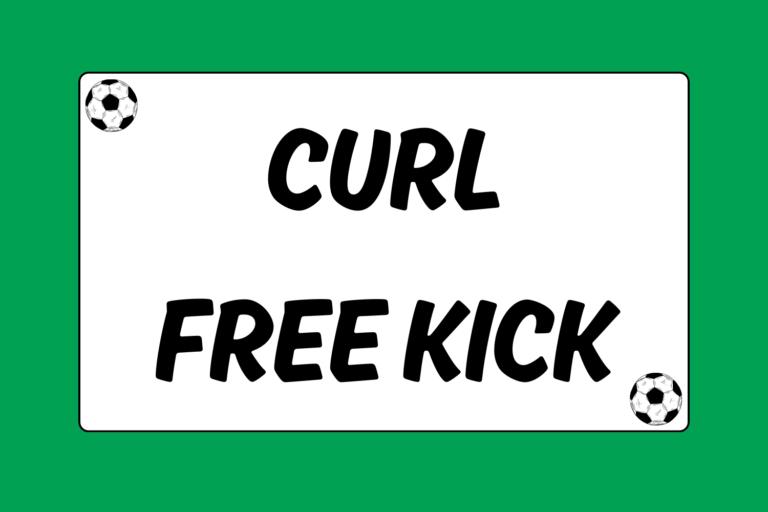There’s no way to develop soccer moves and maneuvers without working on them. Some players are able to pick up new moves quickly, thought for most it takes a good bit of time and effort.
Working on moves in practice is a good idea, but the real payoff will come from the effort you put in during the off-hours. By working away from your teammates, you’ll be able to improve between practices and games. You’ll also get a better sense of what you need to work on to take the next step in your evolution as a player.
No Points for Style in Soccer
Good dribbling and passing moves shouldn’t be about being flashy or catching anyone’s eye; they should, however, help both you and your team succeed. Players who are learning the game should focus on moves that will create time and space to find an open teammate, or get shots on goal.
It’s normal for players to work on fancy moves to impress teammates or coaches. That’s okay for experienced players, but make sure that the moves you work on can help you in a game. Work on them tirelessly to make them yours, and they will definitely help you become a better player on the field.
Hot Tip: Watch & Learn
Don’t be afraid to copy the moves of your teammates or favorite professional players. Many players improve by watching other great players and incorporating their moves.
Start Slow
Working on new moves at home gives you time to get proficient before you try them with teammates or in practice. After you have become proficient at a new move—capable of actually using it in a game-like situation—then you can try it out in an actual game. Avoid trying new moves immediately in a game simply because they seem to work alone in your backyard.
For coaches looking to teach their players new moves, it’s a good idea to introduce a move in practice and then let players work on it alone in open space. Once they seem to have grasped the new move, set up a grid with cones and let the players work on the move in traffic along with teammates. Then, let them execute the move one-on-one with a defender applying pressure. The goal is getting to the point where the move becomes almost second-nature, and much easier to rely on in a game situation.
Moves that Help You Improve
The moves you work on should help you do any of the following:
- create open space
- give you a chance to find an open man
- survey the field
- take a shot on goal
Regardless of the benefit, the best moves are simple to execute, low-risk, and effective — they should increase your pace in the game without making you rush.
First Touch
A good first touch might be the most important move that a developing soccer player can master. Below are the two most important first-touch qualities on which to train:
- Have a plan: To build an effective first touch, it’s important to know where you want to go with the ball and how you can create space. Anticipate the direction of your next dribble, pass or shot and use quick footwork to appropriately maneuver the ball.
- Control: Putting a good first touch on the ball sends it out in front of you where you can control it and keep it away from your defender. Use the side of your foot to get the most control over the ball, allowing you to steer it in the direction you want.
Players working on first touch skills should also get used to trapping with their chest or legs with a first touch that sends it out in front where it can be played ahead.
Self Pass
The self pass is a good tactic after receiving the ball and feeling a defender charge at you from behind. To create a little breathing room, control the ball with a quick flick out in front of you. Passing the ball to yourself this way gives you a (brief) moment to open up your shoulders, face the defender and entire field, and decide what to do next.
A quick self pass also lets you take a step-over or pull-back with the ball, to give you extra time. This combination of steps requires a little practice to master. But a few extra seconds on the soccer field is a huge asset, and this is a great way to get them.
Spin Turn
In this move, the player uses the inside of the foot to control the ball and pivots around it, opening up in a new direction. The ball should be moving slowly in front of the player, and in the direction of the dominant foot. The player plants his dominant foot, rotates his body away from the ball and pulls it toward him with the inside of the foot.
The key to the spin turn is the player’s ability to quickly cut, spin, and sprint in a new direction with the ball. The ball and the player should move simultaneously after the cut.
Shielding the Ball
An alternative to the self pass is to shield the ball from the defender marking you. To do this, keep your body between the ball and the defender, and use the outside of the foot to control the ball. Bend your knees and keep your weight on your back foot so that you can work to shield him away from the ball. Use your back foot, backside, the back of your forearm, and anything else it takes to keep yourself between the defender and the ball.
Mental Edge
The best way to develop this skill is with another man in a squared-off grid. Give the other man thirty seconds to get the ball. Keep score, giving a point to the dribbler for shielding the man or the defender for getting to the ball.
Don’t Be Afraid to Fail
There are countless soccer moves for developing players to learn. Whichever you work to master, understand that perfection only comes with time and effort. In fact, know that there’s a good chance that you will fail the first couple of times you try them — and that’s perfectly fine.
Don’t get discouraged and learn from your mistakes. Remember to use your moves when they help your team win, and not when they help you look good. Keep trying and, eventually, those moves will become part of your arsenal on the field.





